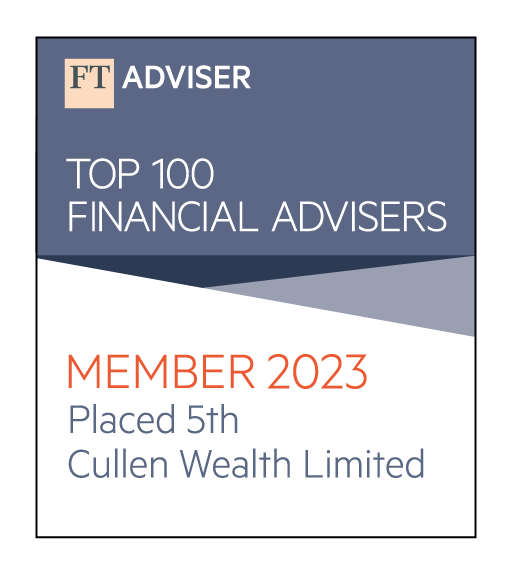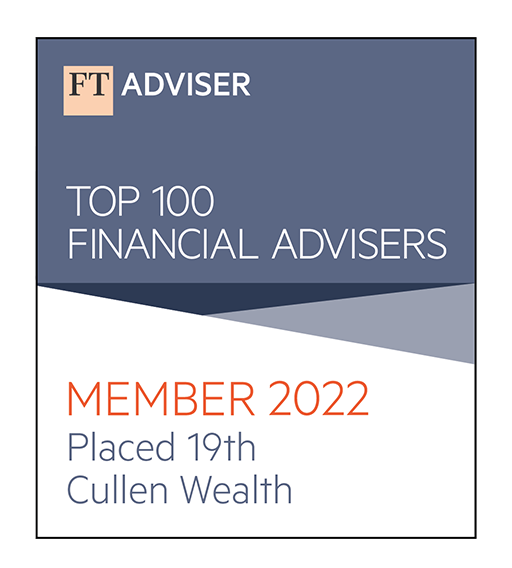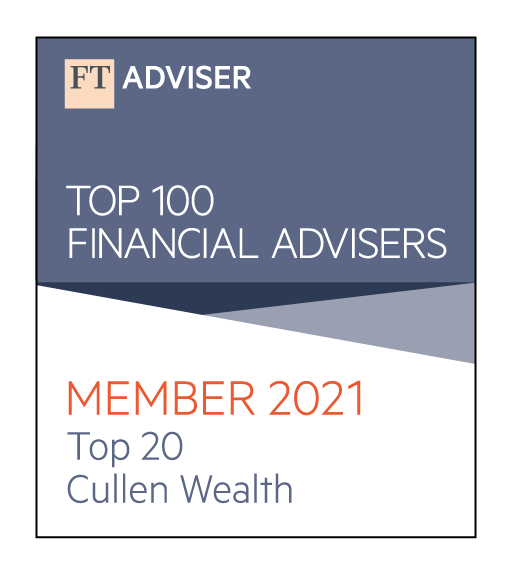Occasionally when we’re compiling these monthly commentaries we look at our notes, realise that not very much has happened in the month and have a minor panic. What are we going to report on?
There are no such worries this month. December 2015 seemed to be the month when pretty much everything happened. The only worry this month is fitting it all in…
December was the month when the United States finally raised interest rates; when the UK started the month by voting for air strikes against the Islamic State and ended it with George Osborne’s much-vaunted ‘Northern Powerhouse’ largely under water. It was the month when there was finally good news for the flagging economies of Spain and Italy: but when Brazil plunged even deeper into recession and when Russia and the Ukraine began limbering up for their annual spat over the Ukraine’s gas supplies.
December was also the month when world commodity prices continued to slide dramatically. By the middle of the month Brent crude was down to $39 a barrel – its lowest level since 2008 – and a few days later it touched $37. Commodities such as iron ore also fell in value, and if your business (or your wider economy) depended on digging things out of the ground, then 2015 was not a good year. OPEC is adamant that the oil price will recover to $70 a barrel by 2020, but right now the slowdown in China is having a far greater impact on oil and commodity prices than OPEC’s optimism.
What of the eleven major world markets we cover in this commentary? The glass was half full, but only just: six were up, and five down. The star performer was Russia, with a rise of 26% despite the country being in recession: the wooden spoon went to Brazil, where the market fell 13% during the year.
UK
Barely had George Osborne sat down from delivering his Autumn Statement than he was back on his feet to announce the date of the next Budget: Wednesday March 16th.
There’ll be plenty of good and bad economic news before then, but the Chancellor got off to a flying start when a report from the International Monetary Fund praised the UK’s recent growth, employment progress and debt reduction as ‘strong.’ The IMF said that ‘steady growth was likely to continue’ but did highlight potential dangers – the high levels of both government and household debt, and a ‘strikingly large’ trade deficit. Inevitably it also highlighted the uncertainty stemming from the forthcoming EU referendum.
Levels of household debt in the UK do appear to be worryingly high (even allowing for Christmas…) The Independent highlighted a forecast from the Office of Budget Responsibility, suggesting that UK families could be on course to spend £40bn more than they earn in the coming year – which could potentially lead to a ‘credit crunch’ similar to that of 2008.
That said, it was expected that retail figures for December and January were likely to be disappointing – despite shoppers being forecast to spend £3.74bn in the January sales.
UK house prices continued to move strongly ahead, rising by 7% a year according to the Office for National Statistics. Nationwide reported a lower annual figure of 4.5%, meaning that the average value of a property in the UK is now £196,999.
Bank of England Governor Mark Carney expressed his worries about the Buy-to-Let sector, saying that lending to landlords was still too high. Gazing into the crystal ball we’d suggest we’ll see more ‘help to buy’ measures in the March Budget.
Elsewhere in UK news, the inflation rate turned positive in November – rising to 0.1% – but manufacturing went in the other direction. Having enjoyed a positive few months, UK manufacturing is suffering a poor end to the year according to the Engineering Employers Federation. Overall, it now expects manufacturing output to fall by 0.1% in 2015, and to rise by 0.8% in 2016.
Manufacturing certainly won’t be enjoying a short term boost from the expansion of Heathrow: to widespread criticism from business groups (‘gutless’ was one of the kinder phrases) the Government delayed a decision on a third runway until at least the summer of 2016.
December ended with severe flooding in the North of England, with estimates putting the cost at £2bn so far. The last of the current pound coins was minted, and Kellingley Colliery closed down, bringing deep coal mining in the UK to an end.
What did the FTSE-100 index of leading shares make of all these events? Not much was the answer: the FTSE started the year at 6,566 and closed at 6,242 for a fall of 5%. In December the market dropped by 2%, having started the month at 6,356.
Europe
The month began with the European Central Bank announcing yet more moves to boost the Eurozone economy. The overnight deposit rate was cut from minus 0.2% to minus 0.3% in a move intended to force banks to lend, as opposed to simply ‘parking’ money at the ECB.
The ECB also extended its monthly €60bn stimulus programme by six months to March 2017, but left its main interest rate on hold at 0.05%. ECB President Mario Draghi told a news conference that the stimulus programme ‘was working.’ However, many analysts were less than convinced that the stimulus package will achieve its aim of pushing Eurozone inflation back to 2% by next year.
At first glance the analysts appeared to have won round one when the December Purchasing Managers’ Index for the Eurozone fell slightly from 54.2 in November to 54.0 in December: remember that any figure above 50 indicates confidence and – hopefully – growth.
However, the last three months of 2015 did see the strongest growth in Europe for more than four years – with the service sector showing its best gains since November 2010. The pace of growth in manufacturing was also up – turning in its strongest performance for twenty months.
Perhaps even more significantly, there was good news from Spain and Italy, the third and fourth largest economies in the Eurozone. Retail hiring in Spain is up nearly 2% on a year ago – the best figure since Spain entered its deep recession in 2008 – whilst business confidence in Italy also appears to be strengthening.
The Spanish recovery may be tested by an uncertain general election result in December, after two new parties won nearly a third of the seats. The anti-austerity party Podemos and the liberal Ciudadanos both made big gains as the Conservative Popular Party lost its majority. A coalition government appears inevitable.
…And no mention of European politics would be complete without Greece, where the government was busy approving a budget for grown-ups. There were spending cuts and tax increases: but as we have seen so often with Greece, imposing tax increases is one thing, collecting them quite another…
Both of Europe’s leading stock markets – Germany and France – did well in 2015, with rises of 10% and 9% respectively. Having started the year at 9,806 the German DAX index closed at 10,743. There was a fall of 6% in December, but a rise of 10% represents a good year nonetheless. It was a similar picture in France, with the market also falling by 6% in December, but ending the year at 4,677 from a starting point of 4,273.
US
At last! After months of will-they-won’t-they, the US Federal reserve finally raised interest rates by 0.25%, in the first increase since 2006.
The move – which looked inevitable following Janet Yellen’s ‘strong economy’ comments at the beginning of the month – meant an increase from 0.25% to 0.5%. It will undoubtedly cause ripples around the world, possibly adding to the pressure for a rate rise in the UK and definitely meaning higher borrowing costs for developing economies, some of which are already struggling with low growth.
Someone who isn’t struggling with low growth is Facebook boss Mark Zuckerberg. Following the birth of his daughter he announced that he’d be giving away 99% of his fortune: why didn’t he wait until he had teenage children? It would have happened automatically…
The US economy added 211,000 jobs in November, slightly above expectations, whilst the jobless rate remained steady at a seven year low of 5%.
However, this good news on jobs was countered by growth for the third quarter being revised down from 2.1% to 2.0% and by a slump in house sales as buyers struggled with new ‘Know before you Owe’ regulations.
In company news Dow and DuPont are to merge, creating a chemicals group valued at $130bn whilst – almost unbelievably – a company which is not an iPhone app was sold for $13.9bn. Keurig Green Mountain makes single-serve coffee pods, and has accepted a bid from a German investment firm whose directors presumably need more than one espresso to kick-start their day.
The Dow Jones index certainly needed more than one espresso, finishing December at 17,425 – down by 2% for both December and the year as a whole. Having started 2015 at 17,823 this was the Dow’s worst performance for seven years.
Far East
We have written frequently over the year about the economic slowdown in China and the impact that it’s having on world trade. Let’s consider another problem facing the country – air quality and pollution. Anyone who’s seen a news bulletin from Beijing lately will have noticed the very low visibility in China’s capital – and now the country is to receive a $300m loan from the Asian Development Bank specifically to help it combat dangerous pollution levels in Beijing and the surrounding area, which the ADB describes as ‘jeopardising health and sustainable growth.’
But throughout 2015, there’s been one thing even less clear than the visibility in China – the direction of the stock market. The Shanghai Composite Index started the year at 3,235. By June it had risen dramatically to 5,166: two months later it was down to 2,927 and news broadcasts were awash with wailing investors who’d ‘lost everything.’ Meanwhile, some of the bosses of the brokerage firms blamed by the government mysteriously disappeared. The market finally closed at 3,539: up 3% in December and up a perfectly respectable 9.4% for the year as a whole. But if ever you wanted proof that markets ‘can fall as well as rise’ you only had to look at China in 2015. Assuming you could see through the smog…
What of the other major Far Eastern markets? Surprisingly Hong Kong did not follow China’s lead and was down by 7% over the course of the year, starting at 23,605 and ending the year at 21,914, having been largely unchanged through December.
It was a better year in Japan: the market fell 4% in December with troubled conglomerate Toshiba announcing a record loss of $4.5bn and 6,800 redundancies – but over the full year the Nikkei Dow rose 9% to close at 19,034.
The South Korean index simply swapped two digits round; it opened 2015 at 1,916 and ended it at 1,961 – a rise of 2% for the year, having fallen by that amount in December.
Emerging Markets
With the Olympics due to be held in Rio in 2016 it seems appropriate to start this section in Brazil – a country where 2015 has seen an unremitting flow of economic bad news. The country has lurched from crisis to crisis throughout 2015, with figures for the third quarter confirming that the recession was deepening; the economy shrank by 1.7% in Q3 and is now 4.5% smaller than a year ago.
Unsurprisingly, this has impacted on the government’s finances, and the figures for November were particularly bad, with the public sector deficit jumping to one of the highest levels on record – $5.1bn as against October’s figure of $2.99bn.
The stock market had a wretched year, falling by 4% in December and 13% for the year as a whole: having started 2015 at 50,007 the Brazilian market closed the year at 43,350.
In Russia the stock market moved in exactly the opposite direction: largely unchanged in December but up 26% for the year as a whole, having started 2015 at 1,397 and closing the year at 1,761.
However, the stock market gains do not tell the full story for Russia: 2015 was a desperate year for the rouble, which fell 26% largely thanks to the slump in the oil price. Much as Vladimir Putin wants the crisis to have peaked, Russia is heading for a second year of recession, irrespective of what the stock market says. Russia also appears to be on course for its annual spat with the Ukraine as the latter once again refuses to pay for its gas supplies. Mr Putin has stuck firmly to his New Year traditions and may well be turning off the gas – and much of the Ukraine’s heating – any day now…
India is the other major emerging economy we cover – and it was another market which had a disappointing year. Again largely unchanged in December, it fell by 5% for the year as a whole, starting at 27,499 and finishing 2015 at 26,049.
And finally…
Did you know that … apparently fairy lights can slow down your internet speed? This dire warning came from Ofcom, as it also named baby monitors and microwaves among the potential culprits.
Rather than leave you with this rather negative thought however, we’d like to wish you all the very best for 2016 and look forward to bringing you more market commentaries throughout the year.





